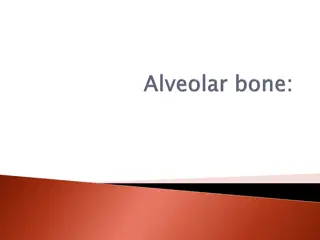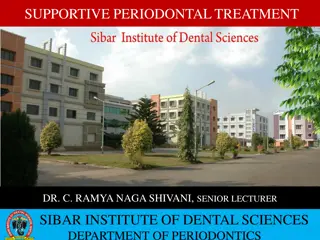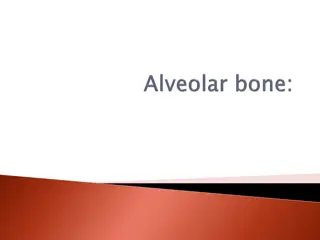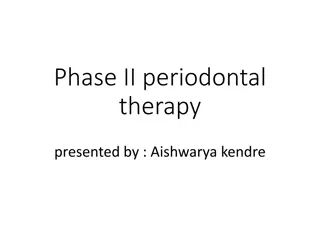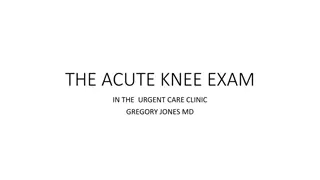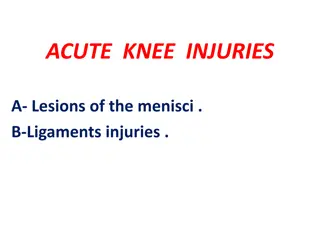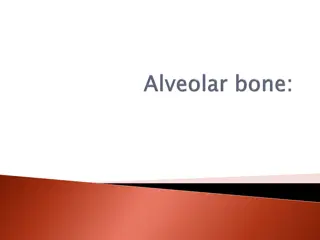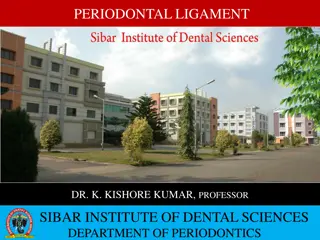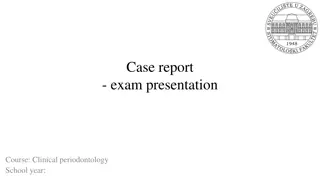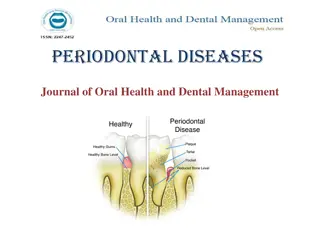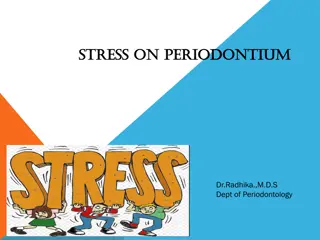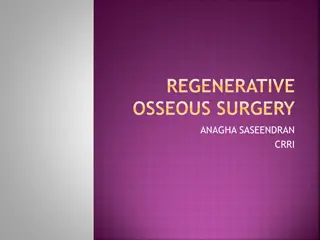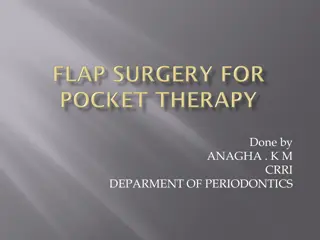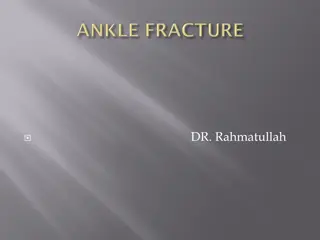Understanding Periodontal Ligament: Composition, Functions, and Structure
The periodontal ligament (PDL) is a complex tissue that surrounds a tooth root and connects it to the alveolar bone. It plays a crucial role in tooth support and function. This comprehensive guide covers the composition, principle fibers, blood supply, nerve supply, and lymphatic drainage of the PDL. Explore its synonyms, extent, shape, average width, and structural components. Learn about the important cellular elements and ground substance of the PDL.
Download Presentation

Please find below an Image/Link to download the presentation.
The content on the website is provided AS IS for your information and personal use only. It may not be sold, licensed, or shared on other websites without obtaining consent from the author. Download presentation by click this link. If you encounter any issues during the download, it is possible that the publisher has removed the file from their server.
E N D
Presentation Transcript
PERIODONTAL LIGAMENT
LEARNING OBJECTIVES The student should know PDL composition, principle fibers Functions of PDL fibers Blood supply, venous drainage
GUIDED BY- Dr Bhandari sir Dr Om sir Dr Mukesh sir Dr Gauri mam Dr Sukanya mam PRESENTED BY- Anjali G. Hirve IV BDS (Roll no- 04)
CONTENT- INTRODUCTION DEFINITION SYNONYMOUS EXTENT AND SHAPE AVERAGE WIDTH STRUCTURE PRINCIPLE FIBRES CELLULAR ELEMENTS GROUND SUBSTANCE BLOOD SUPPLY NERVE SUPPLY LYMPHATIC DRAINAGE
INTRODUCTION- The term periodontium arises from Greek words peri meaning around and odont meaning tooth. Tissues that invest and support the teeth are collectively termed periodontium.
DEFINITION- According to Carranza- The periodontal ligament is composed of complex vascular and highly cellular connective tissue that surrounds the tooth root and connects it to the inner wall of alveolar bone.
SYNONYMS 1- PERIODONTAL MEMBRANE 2- ALVEOLO-DENTAL LIGAMENT 3- DESMODONT 4- PERICEMENTUM 5- DENTAL PERIOSTEUM 6- GOMPHOSIS
EXTENT AND SHAPE In the coronal direction it is continuous with lamina propria of gingiva and is demarcated by the alveolar crest fibers. At the root apex it merges with the dental pulp. It ranges in width from 0.15-0.38. It is thinnest around the middle third of the root, with an hour glass appearance.
AVERAGE WIDTH DEPENDING ON AGE- 11-16 yrs- 0.21mm 32-52 yrs- 0.18mm 51-67 yrs- 0.15mm ACC. TO FUNCTIONAL STATE OF THE TISSUES- Time of eruption 0.1- 0.5mm At function - 0.2 -0.35mm hypo function - 0.1- 0.15mm
STRUCTURAL COMPONENT OF PERIODONTAL LIGAMENT CELLULAR COMPONENT- 4 TYPES OF CELLULAR COMPONENT 1-Connective tissue component 2-Epithelial rest cells 3-Immune system cells 4-Neurovascular elements
CONNECTIVE TISSUE COMPONENT- 1] FIBROBLAST- Most common ovoid or elongated. Exhibits pseudopodia like process. Can synthesize and phagocyte old collagen fibres. 2] ODONTOBLAST- Produce matrix for new bone formation. Functional osteoblast plumpy cuboidal with large nucleus. Other time- flat 3] CEMENTOBLAST- Develops from mesenchymal cells/fibroblast. Have centrally placed nucleus and basophilic cytoplasm. Formation of cementum.
EPITHELIAL REST CELLS- Epithelial cells rest of malassez are remenant of HERS. Found close to cementum and most numerous in apical areas. No. decreases with age. Some get degenerated and some disappear/some get converted to cementicles. Get proliferated when stimulated and form periapical cyst and lateral root sheet.
IMMUNE SYSTEM CELLS- Neutrophils, lymphocytes, macrophages, eosinophils and mast cells. GROUND SUBSTANCE- PDL contains large portion of ground substance filling spaces between fibres and cells. 2- MAIN COMPONENTS- 1-Glycosaminoglycans- hyaluronic acid and proteoglycans 2-Glycoprotins- fibronectin and laminin 3- 70% water
PRINCIPLE FIBRES- Are important elements of pdl are principle fibres. They are collagenous and arranged in bundles and follow wavy course when viewed in longitudinal section. Terminal portion of principle fibres are embeded in bone and cementum are termed as sharpeys fibres. Collagen is a protein composed of different amino acid like glycine, proline, hydroxy lysine, hyroproline. Amount of collagen can be seen /determined by hydroxyproline. Principle fibres are made of type one collagen fibres Reticular fibres- Type 3 Basal lamina- type 4
SIX TYPES OF PRINCIPLE FIBRES OF PDL 1- TRANSSEPTAL FIBRES 2- ALVEOLAR CREST FIBRES 3- HORIZONTAL FIBRES 4- OBLIQUE FIBRES 5- APICAL FIBRES 6- INTERRADICULAR FIBRES
1-TRANSSEPTAL FIBRES- Extends interproximally over the alveolar bone crest and are embeded into the cementum. FUNCTION- -reconstructed after destruction of alveolar bone in periodontal disease. - do not have osseous attachment.
2- ALVEOLAR CREST FIBRES- Extend obliquely from cementum just below the junctional epithelium to alveolar bone crest. FUNCTION- Retain the tooth in socket. Resist lateral tooth movement. Protect deeper periodontal structure.
3-HORIZONTAL GROUP OF FIBRES- Extend at right angle to long axis of teeth from cementum to alveolar bone. FUNCTION- Resist tipping forces. Prevent lateral tooth movement.
4-OBLIQUE FIBRES- Largest group of pdl. Occupy middle 2/3. Extend in coronal direction obliquely to the bone FUNCTION- Resist vertical masticatory forces. Transfer them into the tension on the alveolar bone.
5- APICAL FIBRES- radiate irregularly from cementum to alv. Bone at the apical region. Do not occurs in incompletely formed tooth FUNCTION- Resist tipping forces. protects delicate blood vessels and nerves
INTERRADICULAR FIBRES- Fan out from cementum to bone in multirooted teeth. FUNCTION- Resist tipping forces.
FUNCTIONS- 1- PHYSICAL FUNCTION 2- FORMATIVE AND REMODELLING 3- NUTRITIVE 4- SENSORY
PHYSICAL FUNTION- 1- Provision of a soft tissue casing to protect the vessels and nerves from injury by mechanical forces. 2- Transmission of occlusal forces to the bone. 3- attachment of the teeth to the bone. 4- maintenance of the gingival tissues in their proper relationship to the teeth. 5- resistance to the impact of the occlusal forces.[shock absorption]. 2 theories of transmission of occlusal forces and mechanism of tooth support- 1] tensional theory ; 2] visco-elastic theory
FORMATIVE AND REMODELING FUNCTION- Cells of pdl participate in the formation and resorption of cementum and bone, which occurs in -physiologic tooth movement , accommodation of the periodontium to occlusal forces in the repair of injuries. REMODELING- the 3D organization of the fibre meshwork is adapted to accommodate for positional changes in functional state. It relates to adaptability of pdl tissues. Both these processes can occur simultaneously and may therefore be indistinguishable. The pdl is constantly undergoing remodelling . Old cells and fibres are broken down and replaced by new ones.
NUTRITIONAL - PDL supplies nutrients to the cementum , bone and gingiva by the way of blood vessels and provides lymphatic drainage. The PDL contains blood vessels , which provide anabolites and other substance to the cementum, bone and gingiva and removes catabolites.
SENSORY FUNCTIONS- The PDL is abundantly supplied with sensory nerve fibres capable of repair of transmitting tactile, pressure, and pain sensation by the trigeminal pathway. The PDL provides most efficient proprioceptive mechanism. 4 types of neural terminates are seen 1- free nerve endings- pain 2- Ruffini like mechanoreceptors (apical area) 3- Meissner's corpuscle mechanoreceptors (middle third) 4- spindle like pressure and vibration endings (apex)
LYMPHATIC DRAINAGE- PDL mainly drains in- Submandibular lymph nodes Submental lymph nodes Superficial lymph nodes Deep cervical lymph nodes
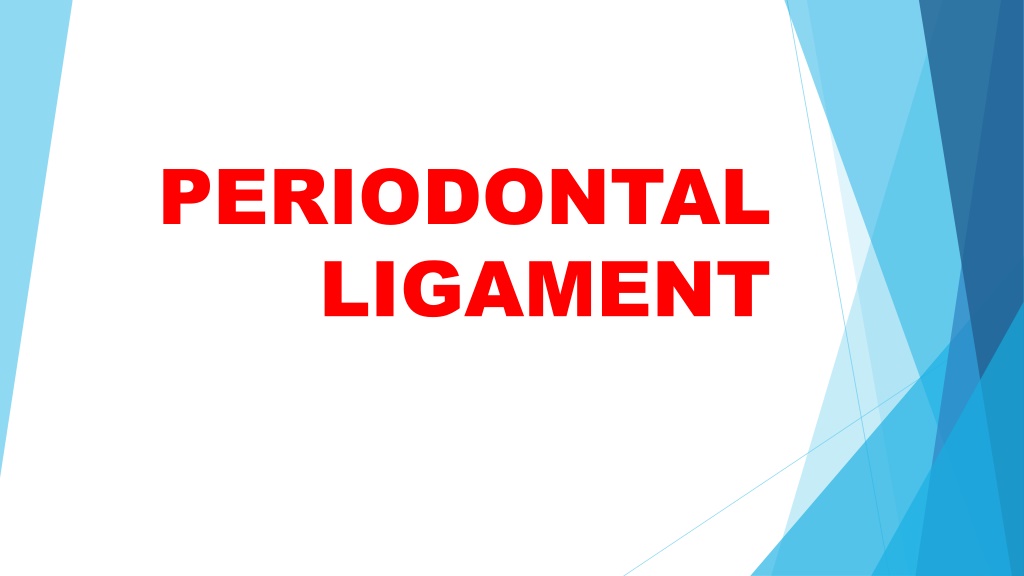
 undefined
undefined





